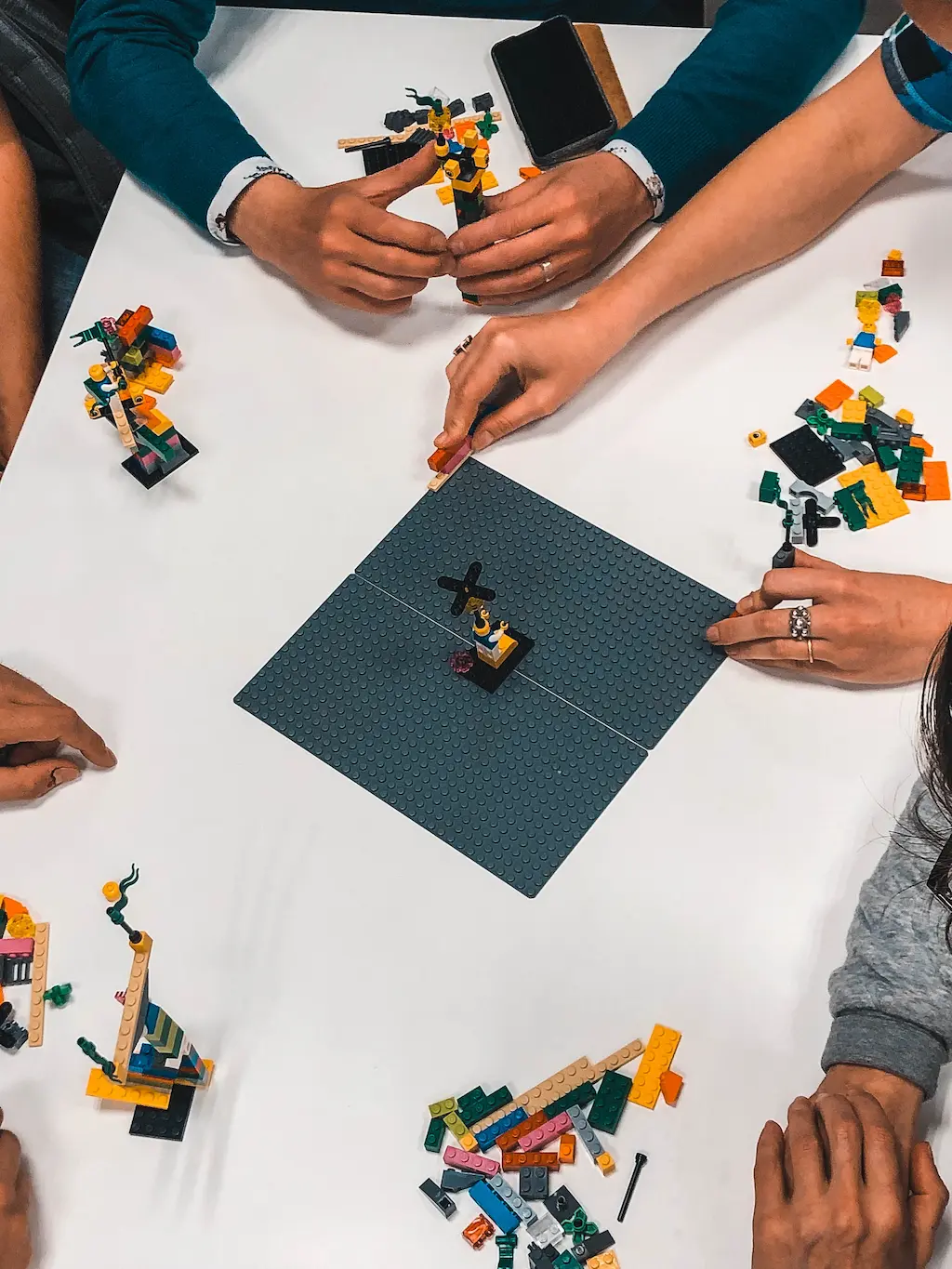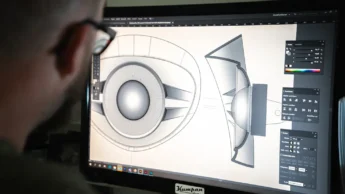The time has come! Your prototype is ready. You have developed all your ideas into a physical copy. Now it is time to take the next steps. How will you market your prototype? And what needs to happen first?
Once your prototype is ready, your product is not yet ready for the market. There are still some important things to be done, such as getting your production ready. Find out how to proceed with your prototype using the following next steps.
- Testing and gathering feedback: Test the prototype thoroughly to see if it meets the set requirements and collect feedback from users to make any improvements.
- Iterate and improve: Use the feedback to improve the prototype and create new versions. Repeat this process until you have a final version that meets all the requirements.
- Prepare for production: Make sure the prototype is ready to go into production. This includes, for example, selecting the right materials and setting up the production line.
- Marketing and launch: After the prototype has been successfully tested and produced, it is time to market and launch the product. Think about how to market and sell the product.
- Support and maintenance: Once the product is on the market, you need to provide support and maintenance to ensure the product continues to function well and customers remain satisfied.
Do you want to innovate and have your idea developed in collaboration with Beeliners? We would love to help you! Feel free to drop by for a cup of coffee and we will be happy to discuss the possibilities with you.
1. Gathering feedback
The moment you have created a prototype, it is not immediately equivalent to the final product. It is important to take the time to improve your prototype. You do this using feedback. There are several ways to gather feedback on a prototype. Here are some common methods:
- User testing: Let potential users try out the prototype and observe their behaviour and comments. Ask them for feedback on the usability, functionality and other aspects of the prototype.
- Online surveys: Create an online survey with questions about the prototype and send it to a target group. This can be a good way to gather feedback from a wide audience.
- Focus groups: Organise a focus group with people who belong to the target group. Ask them for their opinions about the prototype and use their feedback to improve it.
- Interviews: Hold interviews with individuals who have used the prototype. Ask them to share their thoughts and feedback on the prototype.
- Analytics: Use analytics tools to track the use of the prototype. This can provide information about how people are using the prototype and where any problems lie.
It is important to collect feedback in a structured and methodical way to get useful insights that will help improve the prototype.

2. Iterate and improve
The moment you have received sufficient feedback, you can proceed to improve your prototype. Review the feedback that has been collected and identify the main problems and pain points users have indicated. Also look for patterns in the feedback to identify common problems.
You can then prioritise the key problems you want to solve. This can be done based on the severity of the problem, the frequency with which it occurs and the impact it has on the user experience. Brainstorm on possible solutions to the problems you have identified. Be creative and consider the constraints and budget you have.
Create a new version of the prototype with the solutions you have come up with. Keep in mind the priorities you have set and make sure the new version has been improved based on the feedback. Then retest the new version with users and collect feedback again. Analyse the feedback again and repeat the process until you are satisfied with the prototype.
By repeating the iteration process and incorporating feedback step by step, you can improve a prototype until it meets the desired requirements and user experience.
3. Getting ready for production
Now that you are completely satisfied with your prototype, you can make it production-ready. This is another process where you have to make essential choices. For example, you need to decide which materials are best for producing the prototype. This can depend on factors such as cost, durability and quality.
Then you can get to work on creating technical drawings of the prototype to guide the production of parts and set up any machinery or tools. Look for suppliers who can provide the required materials and make any parts for the production of the prototype.
Plan the production of the prototype and make a schedule for the production of each part. Set up any machinery or tools needed to carry out the production of the prototype. Remember to carry out quality checks during production of the prototype to ensure that each part meets specifications. Assemble the prototype once all parts have been produced.
By preparing the production of the prototype properly, you can ensure that the prototype can be produced efficiently and effectively and meet the specifications.
4. Marketing your product
Then perhaps the most exciting moment has arrived. It is time to bring your product to market. However, successfully marketing a product requires a thorough strategy. Here are some steps that can be taken to market a product:
- Identify your target audience: Determine who the product’s target audience is and what their needs and interests are.
- Develop a marketing strategy: Develop a marketing strategy tailored to your target audience. This could include content creation, social media, email marketing or traditional advertising.
- Create promotional materials: Create visually appealing promotional materials, such as images, videos, packaging and website content.
- Create a sales network: Find sales channels that suit your product, such as online marketplaces, retail shops or direct sales through your own website.
- Develop a pricing strategy: Determine the price of your product based on the market and competitors, but also on the value it offers to the customer.
- Provide customer service: Provide good customer service to ensure customer satisfaction and resolve any issues quickly.
- Collect feedback: Collect feedback from customers to understand how they perceive the product and how you can improve this experience.
- Build relationships: Build relationships with customers and other stakeholders by keeping them informed about news, updates and special offers.
Successfully marketing a product requires effort and time, but by developing a good strategy and executing it consistently, you can market your product effectively. If necessary, find a suitable party to help you in this process.
5. Support and maintenance
Providing good support and maintenance for a product is essential to ensure customer satisfaction and extend the life of the product. Here are some steps that can be taken to provide good support and maintenance:
- Provide clear and detailed manuals: Ensure that manuals are available to customers that clearly explain how to use and maintain the product.
- Offer customer service: Make sure customers can easily contact your company for support, whether it is questions about the product or help with problems.
- Keep products up-to-date: Make sure products are updated when needed, such as when security updates are available or new features are added.
- Offer repair and replacement services: Make sure repair and replacement services are available to customers so they can have their products repaired or replaced if something goes wrong.
- Collect feedback: Collect feedback from customers to understand how they experience the product and how you can improve support and maintenance.
- Provide training: Offer training or workshops for customers to help them better understand and use the product.
- Communicate proactively: Communicate proactively with customers about any problems or changes to the product, and offer solutions or alternatives.
Working on your prototype together with Beeliners
Do you have a good idea for a product, service, process or technological innovation? And would you like to develop your idea into a prototype?
When working with Beeliners, we help you throughout the process. We think along with you and create a prototype together. We would love to help you! Feel free to drop by for a cup of coffee and we will be happy to discuss the possibilities with you.
Also interesting
-

Various types of prototypes, 3 categories
When you want to develop your idea into a physical product, it is important to create a prototype to discover what your strengths and pitfalls are. There are many types of prototypes to choose from. Discover the different types of prototypes in this blog. Prototypes come in many different… Read More
-

How do you make a prototype? 3 ways
To check whether your idea is really as good as you think it is, it is good to make a prototype of it. Making a prototype does not have to be so difficult or cost a lot of money or time. In this blog article, you will read about three… Read More
-

What is a prototype?
You have a great idea for renewal or innovation within your company. How do you make sure your idea becomes reality? A prototype will give you a good idea of how your idea will develop. But what is a prototype? When developing new ideas, a prototype is often used. In… Read More

